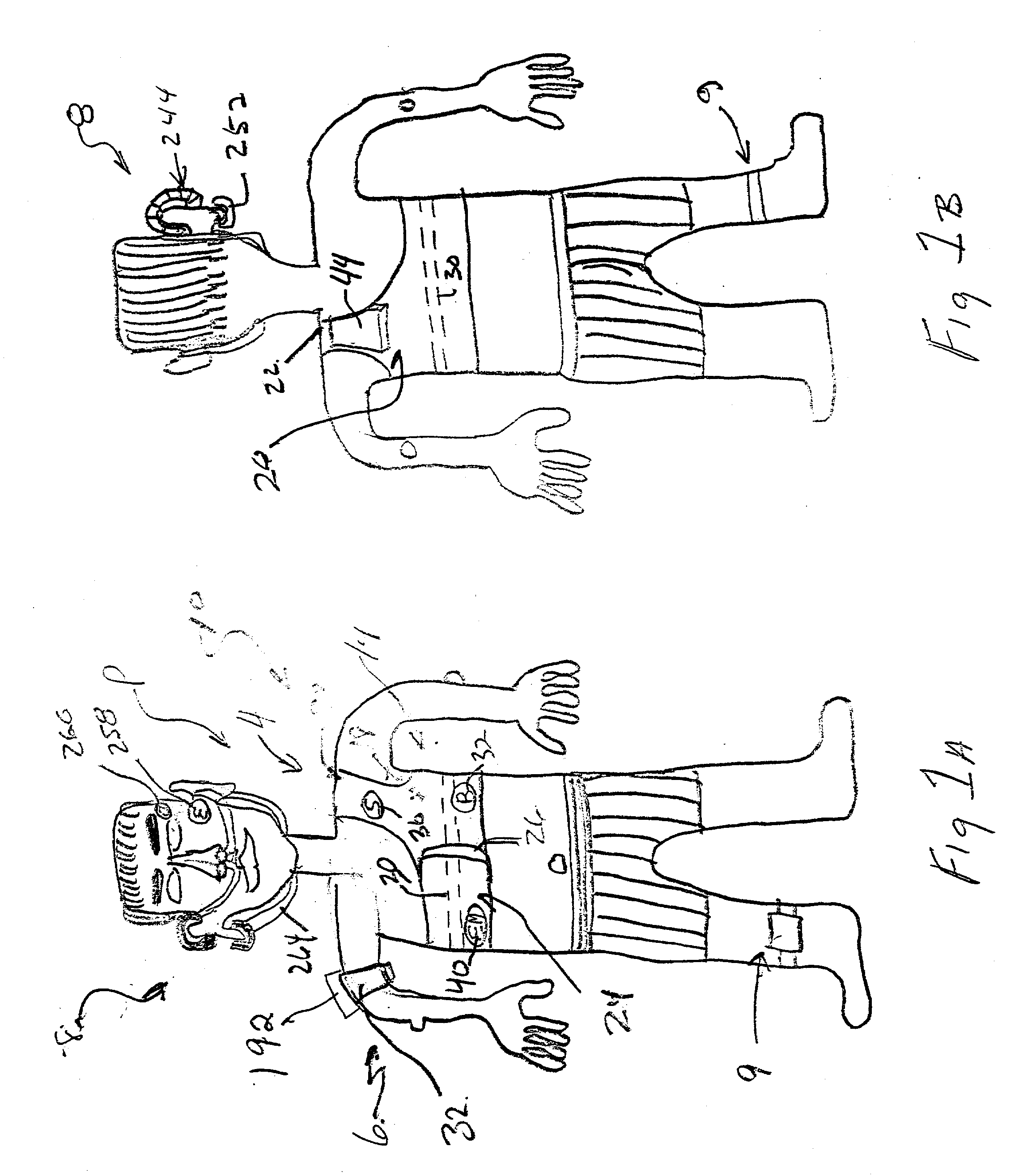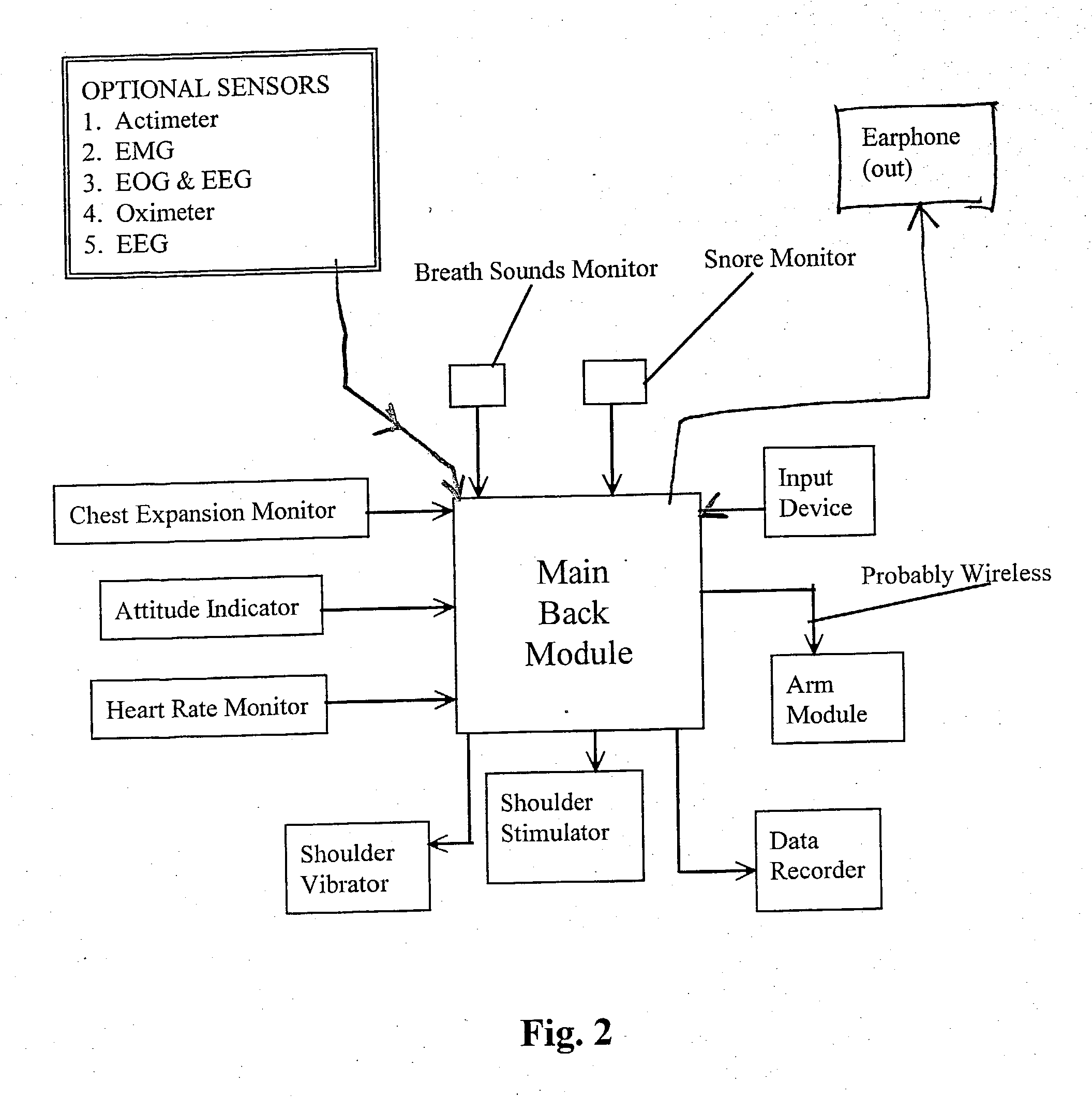Device and method for treating disordered breathing
a technology for breathing disorder and breathing apparatus, applied in the field of medical devices, can solve the problems of severe reduction of the response to conditioning, lack of patient compliance with such a testing regime, and excessive daytime sleepiness, so as to promote proper breathing, stop his snoring, and strengthen the shaking
- Summary
- Abstract
- Description
- Claims
- Application Information
AI Technical Summary
Benefits of technology
Problems solved by technology
Method used
Image
Examples
Embodiment Construction
[0095] As best shown in FIGS. 1a and 1b, the sleep disordered breathing (SDB) treatment device 10 of the present invention includes a chest module 4 that is placeable around the chest of the patient and an arm module 6, that is placeable around the arm of the patient, adjacent to the patient's biceps and triceps muscles, and a head module 8 that is worn over the head of the patient and which is coupled to the patient's ear. A leg-mounted actimeter 9 can be placed on the leg of the patient to monitor leg movement of the patient, and also to induce a stimuli to cause a leg movement response in the patient that has been found by the Applicant to arouse the patient out of a sleep disordered breathing (SDB) event, and to help resume normal breathing.
[0096] The chest module 12 is best shown in FIGS. 1a, 1b and 8, as including a chest-engaging shoulder wrap 14 that may be similar in configuration and construction to SHARPER IMAGE.RTM. magnetic therapy shoulder wrap that is distributed by T...
PUM
 Login to View More
Login to View More Abstract
Description
Claims
Application Information
 Login to View More
Login to View More - R&D
- Intellectual Property
- Life Sciences
- Materials
- Tech Scout
- Unparalleled Data Quality
- Higher Quality Content
- 60% Fewer Hallucinations
Browse by: Latest US Patents, China's latest patents, Technical Efficacy Thesaurus, Application Domain, Technology Topic, Popular Technical Reports.
© 2025 PatSnap. All rights reserved.Legal|Privacy policy|Modern Slavery Act Transparency Statement|Sitemap|About US| Contact US: help@patsnap.com



